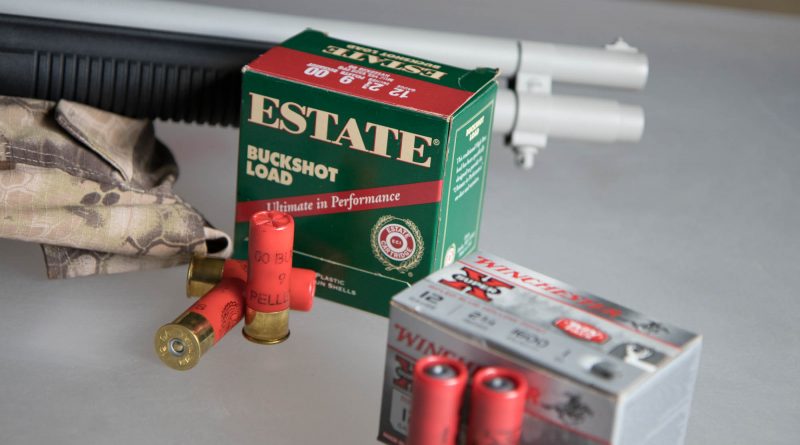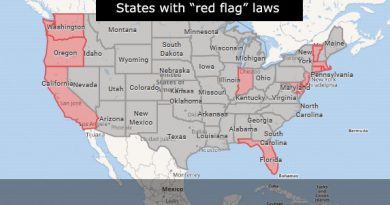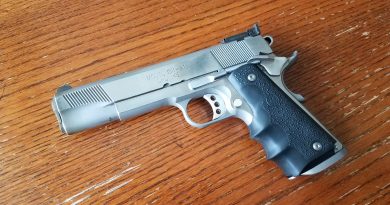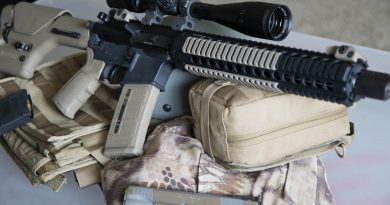Selecting Ammunition for the Combat Shotgun.
The tactical 12 gauge shotgun is a potent weapon and an important tool in the dedicated preppers toolbox. The shotgun enjoys a sometimes mythical status with some while concurrently suffering some exaggerated defamation by others. The great strength of the tactical shotgun is its ability to accept various shell types with various capabilities, however this may also be it’s greatest weakness. Selecting appropriate ammunition can be the difference between having a powerful weapon or a liability.
Selecting cartridges depends largely on the roll in which you you intend to employ the firearm. Buckshot performance changes depending on numerous factors including shot size, plating, wad type, muzzle velocity, etc. Likewise slugs perform differently based on design, weight, material and velocity.
Buckshot
Buckshot is the bread and butter of the tactical shotgun. Ideally buckshot allows the user to strike his target with multiple pistol powered pellets. Common buckshot sizes range from .36 sized 000 Buck, to .24 sized #4 Buck.
Consider… A load of Federal “Power Shok” lead buckshot contains 9 .33 caliber pellets. Its muzzle velocity of 1325 fps charges each pellet with 210 ft lbs of energy and a combined energy of 1890 ft lbs . This puts each pellet in the same ballpark as .380 acp and there’s 9 of them. When you compare this to Hornady’s “Critical Defense” load we see some interesting differences. Hornady throws the shot at 1600 fps, bumps the energy of each pellet to 306 ft lbs, this means each pellet is closer to 9mm than .380 by a fair margin. The shot count is reduced to 8 pellets, with a combined energy of 2448 ft lbs.
Buckshot penetration depends greatly on shot size. #4 offers a larger number of pellets than larger shot sizes however depending on the load it won’t always penetrate the 12″ recommended by the FBI ballistics standard. 000 can over-penetrate the 18″ limit on the other side. #1 buckshot is often considered a good compromise for penetration and number of pellets. When using any cartridge in a defensive situation rule #4 always applies: Know your target and what is behind it. Any projectile capable of stopping a determined attacker will also penetrate interior walls.
The considerations don’t end here, the expected engagement range and resulting pattern are important factors. There is one point that should be noted concerning wadding and patterns. The oldest style wad was typically felt or fiber, but has commonly been replaced by plastic today. These rounds typically had wide patterns. Shotcup development let to tighter more consistent pattering while still having a traditional expanding shot cloud. Some buckshot is now equipped with a weighted long range wad. These loads typically have no expanding shot cloud from 0-7 yards sometimes keeping the shot inside the wad up to 10 or 12 yards. This means at an in distance of 7 yards it is likely the on target footprint of the round will be a single hole. Competitive buckshot is likely to provide something closer to a 7″ pattern. Consider if this is the rounds intended use, the advantage of buckshot is lost and if precision is needed a slug might be a better choice.
Slugs
Slugs are the yin to buckshot’s yang so to speak. The modern shotgun slug is generally a single aerodynamically stabilized lead projectile. Slugs evolved as a performance enhancement to bore sized round lead balls used prior. There are several types of slugs. The most common in the US is the Foster type slug. Other slug types include Sabot, and various bonded wad types. The Foster type slug resembles a short fat lead bullet. The front heavy hollow base design is aerodynamically stabilized. Factory Foster slugs are often designed with rifling on the outside surface. Debate over whether or or not this imparts spin on the projectile rages on. ‘Rifling’ or no Foster slugs enjoy moderate accuracy and are accurate enough for their range.
The slug has a lot of benefits, some obvious others not as well known. A 437 grain .70 caliber lead bullet traveling at 1600 feet a second is an impressive projectile, with lots of energy. Shotgun slugs have a major wounding potential, which can exceed many high velocity rifles. Many shotgun slugs rapidly expand which creates larger wound channels and lend’s itself to less penetration hazard. Many foster type slugs have less penetration than buckshot loads.
Foster slugs are just about as wide as they are long, they have about the same ballistic coefficient of a brick. When compared to rifles, the range of a slug equipped shotgun is low. 200 yards is the extreme top end, and many feel past 100 yards is asking a lot.
If you go looking for shotgun slugs there is a fair chance you will encounter Sabot slugs. Sabot slugs are for the specialized fully rifled shotgun. These projectiles require the spin stabilization of a fully rifled barrel to perform, this means a specialty shotgun not the versatile smooth bore.
Birdshot
Birdshot is a point of much controversy as a defensive load. Critics to focus on the small diameter of the shot combined with limited penetration. Birdshot advocates often point to large birdshot wound diameter and tout reduced over penetration hazard especially to those on the other side of drywall. Some things to consider, Most birdshot is designed for taking game the size of squirrels or rabbits just like .22 long rifle. Would you select a .22 long rifle as a first choice defensive firearm?
Specialty
Specialty loads vary greatly, and can encompass anything from Magnesium Buckshot, or bolo rounds, to double round balls or breaching rounds. There are so many variants and roles for the intended cartridges, the category as a whole cannot be addressed in this forum. Certainly any cartridge should be evaluated by the user for terminal effect before it is selected. Many of these cartridges are less effective than commonly used slugs or buckshot, they are typically quite a bit more expensive. Breaching rounds are a notable stand out. Well engineered breaching rounds are designed to destroy locks and hinges without endangering the shotgun operator and mitigate danger to others. If you are selecting ammunition for locks, breaching rounds are the clear choice.
More information
For more information about home-defense or tactical shotguns take a look at our article setting up a competent tactical shotgun.




